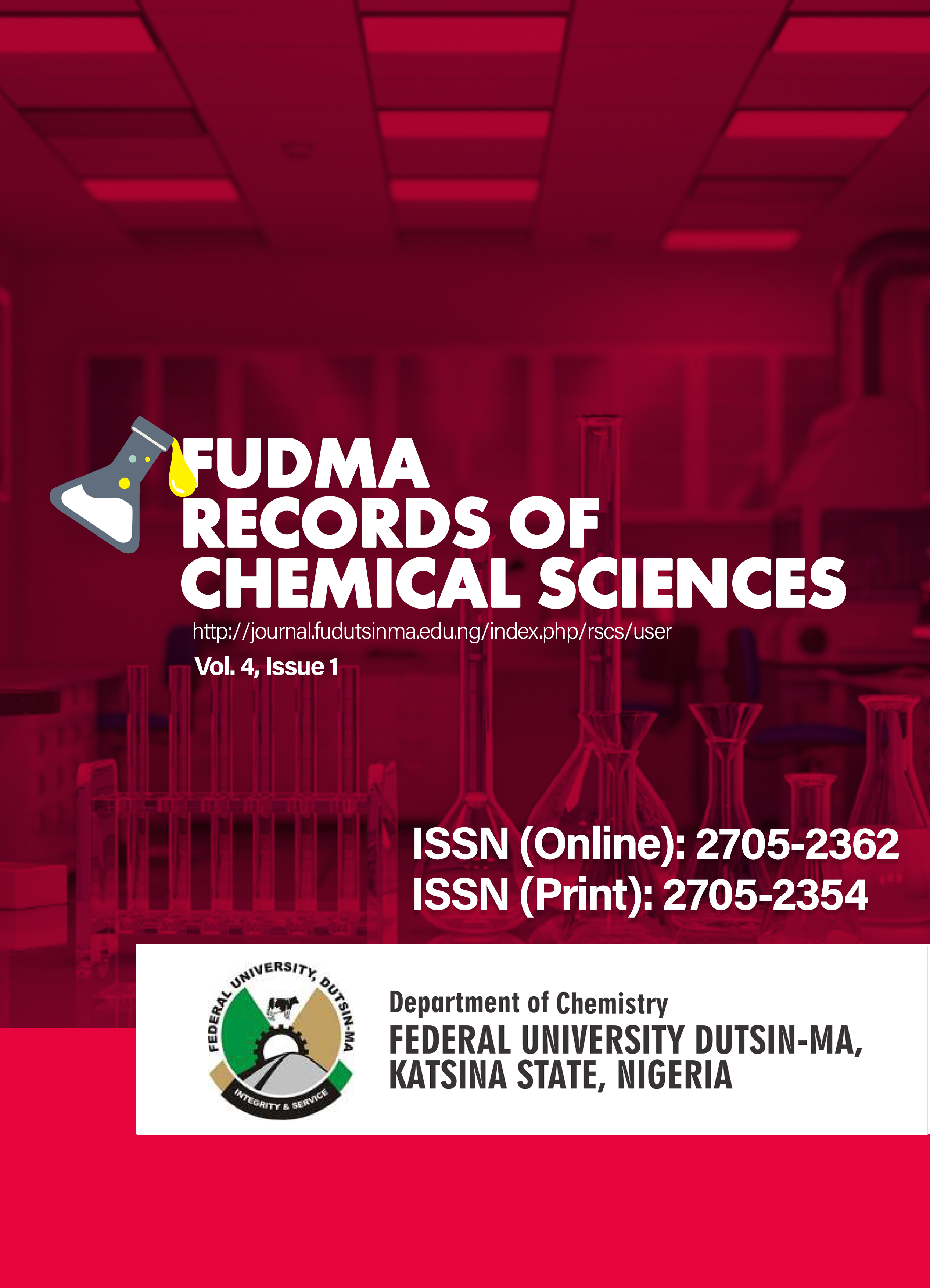Health Risk Assessment of Metal Content in Ginger (Zingiber officinale) cultivated in Maro Farmlands Kajuru LGA, Kaduna State, Nigeria
DOI:
https://doi.org/10.33003/rscs_2025_0401/02Keywords:
Ginger powder, metal concentration, Health riskAbstract
Ginger (Zingiber officinale) is a flowering plant in the Scitamineae order and Zingiberaceae family. Ginger is utilized in a variety of culinary, cosmetic, and medical applications. It's available in Kajuru LGA, Kaduna state, Nigeria's Maro ward. The goal of this study was to determine the levels of Na, Mg, K, Ca, and Fe metals in a few selected farmlands in the area, including Maro, Chibiya, Karamai, and Angwan Gamu. Perkin Elmer pin AAcle 900H was used to analyze four ginger samples acquired from diverse locations and submitted to AAS analysis after wet digestion to assess metal content. The data was examined statistically using analysis of variance (ANOVA). The abundance of metal in Zingiber officinale, according to the findings, is as follows: K>Ca>Mg>Fe>Na, The maximum level suggested by the World Health Organization (WHO) for all metals has not been surpassed. At P>0.05, there was no significant difference in metal content in Ginger among farmlands. All metals had THQ values of less than one. Because the Fe HI values of the samples under research were less than 1, consumers will not be exposed to any potential health hazards as a result of ingesting particular metals through Zingiber officinale eating. Other metal concentrations in Ginger rhizomes should be studied in the future.






